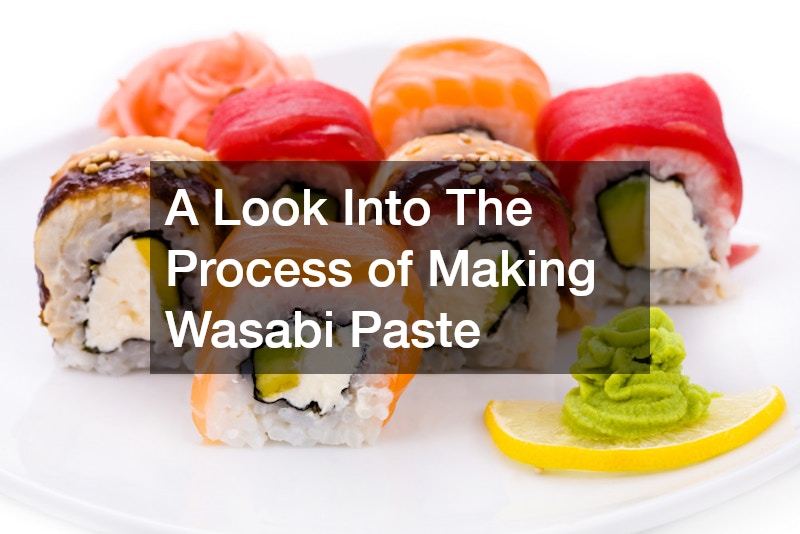Disclaimer: Articles About Food. This site provides food and drink content for informational purposes only.
Wasabi paste is a staple in Japanese cuisine, known for its distinctive heat and vibrant green color. The process of making this zesty condiment involves more than just mixing powdered wasabi with water; it’s a meticulous craft that highlights the unique properties of the wasabi plant.
To begin with, high-quality wasabi paste is derived from the rhizome of the wasabi plant, Wasabia japonica. This plant grows best in cool, running water, and its cultivation is a labor-intensive process.
Once harvested, the rhizomes are carefully washed and scrubbed to remove any dirt. The next step is grating the rhizome. This is done using a traditional sharkskin grater, which is preferred for its texture that helps release the essential oils and flavors from the wasabi. The grating process must be done quickly to preserve the fresh, pungent heat of the wasabi.
After grating, the wasabi is mixed with a small amount of water to create a smooth, cohesive paste. The mixture is left to sit for a few minutes, allowing the flavors to develop and intensify. Wasabi paste has a sharp, spicy flavor that quickly dissipates over time unless properly packaged and preserved.
Wasabi paste is often confused with horseradish or mustard-based products, but wasabi offers a more complex and fleeting heat. Whether enjoyed with sushi or as a flavorful addition to various dishes, understanding the intricate process behind wasabi paste highlights the craftsmanship that goes into producing this beloved condiment. When you want to expand your pallet, wasabi paste is a great choice!
.

